
The A Pythagorean Ionian Scale. This is the familiar "major" scale tuned using octaves, just perfect fifths, just perfect fourths and any compound (or inversion) of those three intervals.



 Brian Sacawa of Sounds Like Now held his "unofficial" CD release party for American Voices at An die Musik this evening. If you've ever wondered what "now" sounds like, it's kinetic and sounds like many things. To my ears, "now" sounded like several fruitful collaborations with a healthy range of composers exploring different aesthetic avenues. The most striking thing was the balanced, two-way dialogue between composer and performer that became increasingly visible over the course of the recital.
Brian Sacawa of Sounds Like Now held his "unofficial" CD release party for American Voices at An die Musik this evening. If you've ever wondered what "now" sounds like, it's kinetic and sounds like many things. To my ears, "now" sounded like several fruitful collaborations with a healthy range of composers exploring different aesthetic avenues. The most striking thing was the balanced, two-way dialogue between composer and performer that became increasingly visible over the course of the recital. Laurie Anderson: Life on a String. 2001. Nonesuch: 79539-2.
Laurie Anderson: Life on a String. 2001. Nonesuch: 79539-2. Ornette Coleman: Dedication to Poets and Writers. Recorded at Town Hall, 1962. Magic Music: 30010-CD.
Ornette Coleman: Dedication to Poets and Writers. Recorded at Town Hall, 1962. Magic Music: 30010-CD. Andrew Hill: Point of Departure. 1964. Blue Note: 7243 4 99007 2 1.
Andrew Hill: Point of Departure. 1964. Blue Note: 7243 4 99007 2 1.

 Jenny Scheinman: 12 Songs. Recorded December 13 - 14, 2004 - released in 2005. Cryptogramophone: CG125.
Jenny Scheinman: 12 Songs. Recorded December 13 - 14, 2004 - released in 2005. Cryptogramophone: CG125. Ludwig van Beethoven: The Complete String Quartets (volume II). Performed by The Orford String Quartet. Recorded in 1989. Delos International: D/CD 3032.
Ludwig van Beethoven: The Complete String Quartets (volume II). Performed by The Orford String Quartet. Recorded in 1989. Delos International: D/CD 3032. Albert Ayler: Holy Ghost [box set] disc 1. Released in 2004. Revenant Records. Disc 1 consists of:
Albert Ayler: Holy Ghost [box set] disc 1. Released in 2004. Revenant Records. Disc 1 consists of:

 Forbes Graham: Another Return. 2007. CD-R - available from the composer at Polyrhythmatics.net.
Forbes Graham: Another Return. 2007. CD-R - available from the composer at Polyrhythmatics.net. Bill Frisell: Bill Frisell with Dave Holland and Elvin Jones. 2001. Nonesuch. 79624-2.
Bill Frisell: Bill Frisell with Dave Holland and Elvin Jones. 2001. Nonesuch. 79624-2. Gunda Gottschalk: Wassermonde. 2002. Elephant 002.
Gunda Gottschalk: Wassermonde. 2002. Elephant 002.
Andrew Hill's music has been in the HurdAudio Rotation lately and I've consistently been struck by the quality of his playing and especially by his accomplishments as a composer. There is sadness in his passing and love for the music he leaves behind.
NEW YORK (AP) -- Andrew Hill, a groundbreaking jazzman, pianist and composer known for his complex post-bop style, died early Friday, his record label announced. He was 75.


 Celeste H - of Les said, the better - is offering an opportunity to commission a short electronic work. Click the banner above, or go here for more information.
Celeste H - of Les said, the better - is offering an opportunity to commission a short electronic work. Click the banner above, or go here for more information. 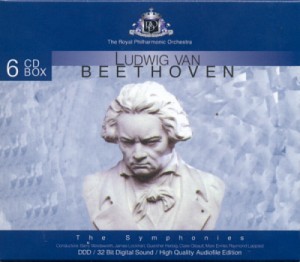 Ludwig van Beethoven: Symphonies No. 1 & 2 (disc 1). Performed by the Royal Philharmonic Orchestra, conducted by Barry Wordsworth, James Lockhart and Guenther Herbig. Recorded August 1994 at C.T.S. Studios, London, England. The International Music Company: 205297-305.
Ludwig van Beethoven: Symphonies No. 1 & 2 (disc 1). Performed by the Royal Philharmonic Orchestra, conducted by Barry Wordsworth, James Lockhart and Guenther Herbig. Recorded August 1994 at C.T.S. Studios, London, England. The International Music Company: 205297-305.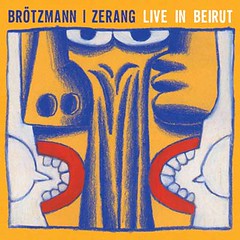 Peter Brotzmann/Michael Zerang: Live in Beirut 2005. Al Maslakh Recordings 03.
Peter Brotzmann/Michael Zerang: Live in Beirut 2005. Al Maslakh Recordings 03.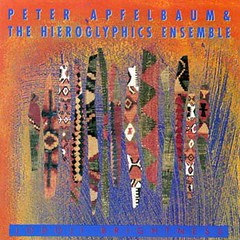 Peter Apfelbaum & The Hieroglyphics Ensemble: Jodoji Brightness. 1992. Antilles: 314-512 320-2.
Peter Apfelbaum & The Hieroglyphics Ensemble: Jodoji Brightness. 1992. Antilles: 314-512 320-2.
 Paul Plimley Trio: Safe-Crackers. 1999. Les Disques VICTO: cd066
Paul Plimley Trio: Safe-Crackers. 1999. Les Disques VICTO: cd066 Ron Miles (with Bill Frisell): Heaven. 2002. Sterling Circle Records: SC5151
Ron Miles (with Bill Frisell): Heaven. 2002. Sterling Circle Records: SC5151 Harry Partch: Delusion of the Fury - A Ritual of Dream and Delusion
Harry Partch: Delusion of the Fury - A Ritual of Dream and Delusion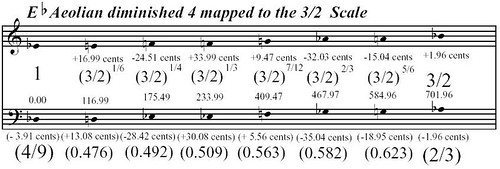
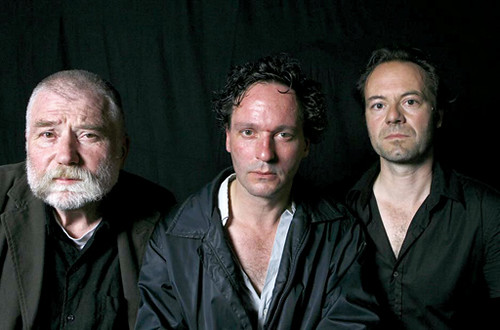 Since moving to Baltimore I've been exposed to a lot of European improvisers as they tour through the city of firsts. It has left me hungry to hear more.
Since moving to Baltimore I've been exposed to a lot of European improvisers as they tour through the city of firsts. It has left me hungry to hear more. This trio is essentially a speed-metal rhythm section with a free jazz saxophonist as the front man. And it works well because of the musicianship of all the players involved. The aggressive physicality of this music is a welcome blast and a chance to hear all the intricate moving parts of this thick mass of sound. It's the details of this swirling, pounding sonic assault that makes this music so engaging. At times, the tide would recede as the rhythm section would pull back to expose the sturdy, coarse yet oddly lyrical playing of Brotzmann before pulling things back into the undertow. I was awed by this group's ability to allow moments of solos to flow organically from this rough sonic fabric without allowing the overall energy level or musical consistency to falter. The skillful fluctuation in density is one of this trio's great strengths. The unflinching exploration into territories of extreme densities and hard-grooving, high-bpm pulse reveals beautiful shards of noise-laced, dissonant detail devoid of the mindless anger often associated with hard-core musics. I'd love to dig through Brotzmann's recorded output (and paintings) to piece together how his sound has evolved into this exquisite darkness.
This trio is essentially a speed-metal rhythm section with a free jazz saxophonist as the front man. And it works well because of the musicianship of all the players involved. The aggressive physicality of this music is a welcome blast and a chance to hear all the intricate moving parts of this thick mass of sound. It's the details of this swirling, pounding sonic assault that makes this music so engaging. At times, the tide would recede as the rhythm section would pull back to expose the sturdy, coarse yet oddly lyrical playing of Brotzmann before pulling things back into the undertow. I was awed by this group's ability to allow moments of solos to flow organically from this rough sonic fabric without allowing the overall energy level or musical consistency to falter. The skillful fluctuation in density is one of this trio's great strengths. The unflinching exploration into territories of extreme densities and hard-grooving, high-bpm pulse reveals beautiful shards of noise-laced, dissonant detail devoid of the mindless anger often associated with hard-core musics. I'd love to dig through Brotzmann's recorded output (and paintings) to piece together how his sound has evolved into this exquisite darkness.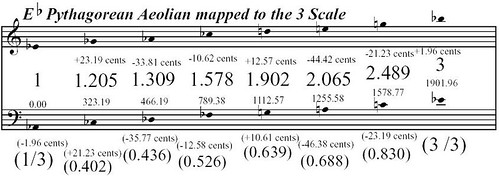


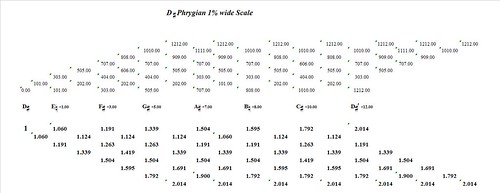
 Clusone Trio: Clusone 3. Ramboy #01, 1991. Continuing with my explorations of Michael Moore's creative output I turn my ears to the Clusone Trio:
Clusone Trio: Clusone 3. Ramboy #01, 1991. Continuing with my explorations of Michael Moore's creative output I turn my ears to the Clusone Trio: Elliott Sharp's Terraplane: Blues for Next. 2000. KFW-85. Terraplane is:
Elliott Sharp's Terraplane: Blues for Next. 2000. KFW-85. Terraplane is: Terry Riley: Atlantis Nath. This one is becoming a frequent part of the HurdAudio rotation as the ears continue to crave this multi-faceted expression from this deeply spiritual composer. Terry Riley doesn't get nearly enough credit both for his arrangements and the substance of compositional ideas.
Terry Riley: Atlantis Nath. This one is becoming a frequent part of the HurdAudio rotation as the ears continue to crave this multi-faceted expression from this deeply spiritual composer. Terry Riley doesn't get nearly enough credit both for his arrangements and the substance of compositional ideas.
